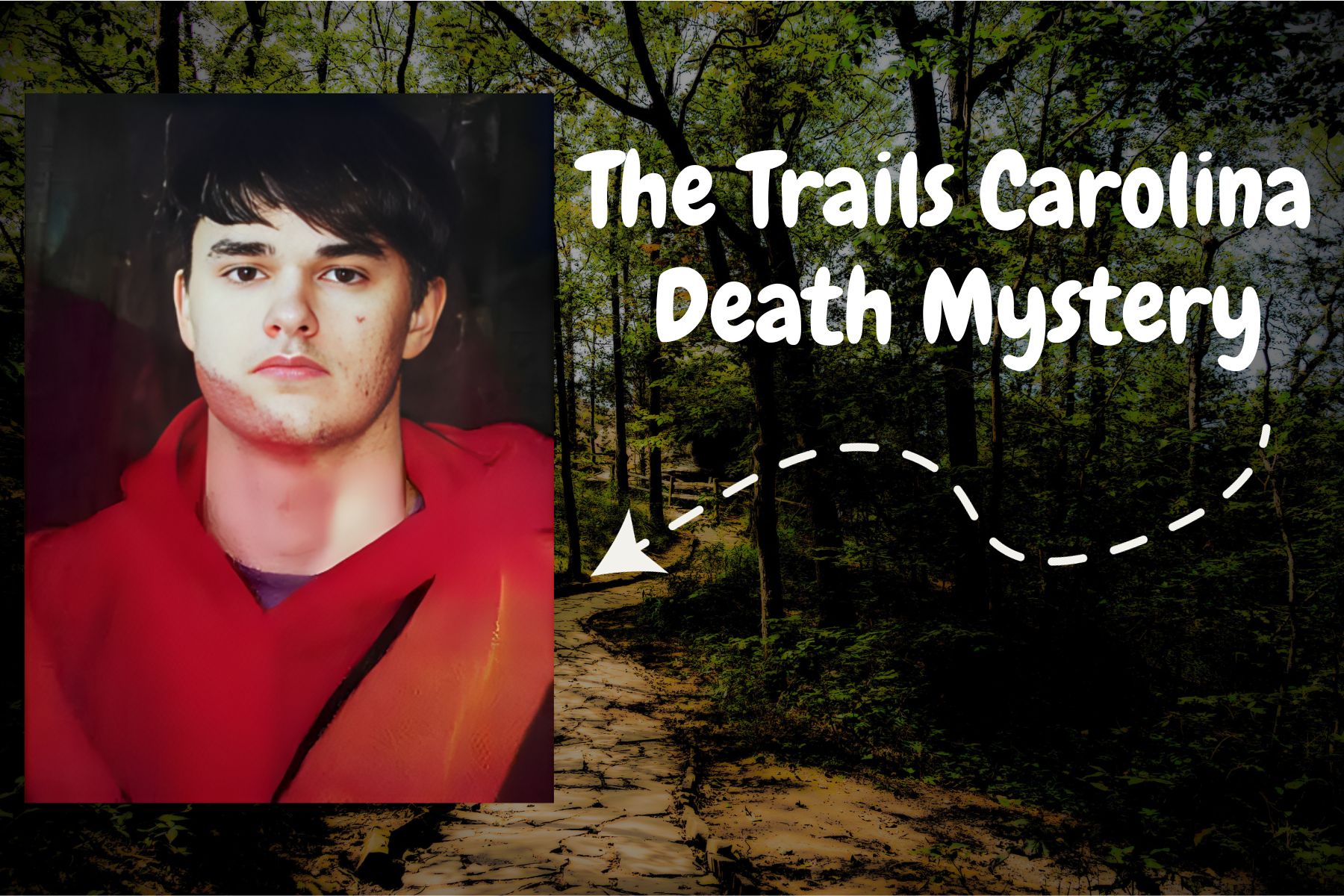Introduction:
Nestled amidst the picturesque mountains of North Carolina, Trails Carolina claims to offer life-altering therapy for adolescents grappling with behavioural challenges. However, beneath the seemingly serene exterior lies a troubling narrative of allegations, injuries, and fatalities. This extensive exploration delves into the controversies enveloping Trails Carolina, shining a light on tragic incidents, regulatory concerns, and the profound impact on participants and their families.
Alec Lansing’s Tragic Demise:
The Trails Carolina saga takes a tragic turn with the unfortunate death of Alec Lansing during a camping expedition in November 2014. Lansing, a mere 17 years old, became disoriented, wandered away from his group, and ultimately succumbed to hypothermia. This distressing incident not only raised serious questions about safety protocols within wilderness therapy programs but also spurred pivotal changes in state regulations and heightened inspections.
Trails Carolina Death List:
The term “Trails Carolina Death List” often circulates with dramatic connotations, yet the reality is more nuanced. While the program aspires to provide a transformative experience for troubled adolescents, incidents like Alec Lansing’s death have cast a shadow, prompting critical questions about safety measures. Trails Carolina, in response, has intensified its emphasis on safety, but persistent allegations of abuse and negligence complicate the narrative.
Tragedies Beyond Alec Lansing:
Alec Lansing’s untimely death stands as one among several tragedies associated with Trails Carolina. Other participants, including William Edward Lee, Ian August, and Charles Moody, met similar fates, raising additional red flags. Investigations brought to light violations of various regulations, from staff training to emergency preparedness, triggering broader discussions on legal and ethical responsibilities within wilderness therapy programs.
Tragic end to a family’s quest for hope
Alec Lansing’s story ended tragically over the weekend at Nantahala National Forest in western North Carolina when he wandered away from Trails Carolina group camping trip on November 10 and vanished into thin air. A massive search effort ensued with staff and volunteers scouring every inch of Nantahala National Forest; technical difficulties prevented confirmation.
His body was later discovered in a stream and it was determined that he had succumbed to hypothermia; his broken hip may have prevented him from moving freely and the cold temperatures likely contributed to his demise. This tragedy ignited nationwide discussion over wilderness therapy’s safety and efficacy.
Recent allegations against Trails Carolina, brought forth by former participants and their families, have raised questions regarding staff training and supervision at Trails Carolina. Trails Carolina staff responded by asserting they are accredited therapeutic wilderness adventure programs with extensive ongoing training for their staff members.
Katelyn Haruko
Katelyn Haruko was a tough girl from an unsavoury town who wasn’t exactly known for being gentle or ladylike. She would fight and beat up anyone she felt had mistreated her friends; she also was involved with drugs and gangs at one time before eventually ending up at Trails program – where she found peace from many of her problems while having an improved life after.
While at Trails, she participated in the wilderness therapy program. This consisted of spending one week living in the Utah desert with an all-female group and using only a tarp as a bathroom. They each shared one roll of toilet paper every week while cleaning themselves using sticks and leaves to remain healthy.
Caleb Jensen
After his time spent in the juvenile detention center, Caleb Jensen was sent to the Trails Carolina wilderness program hoping that it would help turn his life around and restore it. But when he died unexpectedly it raised serious safety concerns regarding this program and its safety – this not being the only tragedy to take place at Trails Carolina but just another one which has severely diminished its reputation.
Caleb Jensen’s story resonates with many parents. At Philomath High School, Caleb was passionate about nature and excelled in both forestry and sports – playing for their football team as well as excelling as a forestry student. Yet behavioural problems hindered his efforts at Trails Academy despite writing multiple letters home from Trails asking his mother for assistance.
One of his letters addressed to his mother stated that he felt “broken and broken,” asking her to come home. Unfortunately, days after writing this letter he was found dead near Montrose Colorado from an untreated staph infection.
Jensen was found bundled inside a sleeping bag with his body covered with urine and faces, having contracted methicillin-resistant Staph aureus which ultimately led to his death. Since then, his mother has filed suit against Alternative Youth Adventures.
Hyde has no solid evidence against the program that runs it, as its staff undergoes comprehensive first-aid training and other relevant medical issues that were relevant. Furthermore, they maintain that they were not responsible for Caleb Jensen’s death.
Sergey Blashchishen
Sergey Blashchishen, 16, from Parkrose, Oregon, died of heatstroke while hiking with Sage Walk Wilderness School’s program and is the subject of an active homicide investigation. Blashchishen collapsed after complaining of fatigue on a trail near Hampton before vomiting blood stopping breathing entirely and collapsing on a trail nearby before becoming unresponsive a short while later. Blashchishen’s family has retained an attorney to take legal action against this wilderness school program.
Sergey’s death serves as an alarming reminder of the risks involved with wilderness education for teens. Over recent years, four teenagers have died while hiking in wilderness environments: firstly a 15-year-old died of hyperthermia in 2000; later that same year another teenager died after suffering head trauma after being restrained during a hike; finally in 2004 another teenager succumbed to asphyxiation due to asphyxiation while hiking alone – these deaths have cast a pall over outdoor schools’ reputations; these tragedies have had far-reaching ramifications: they have cast a shadow over their reputations despite their positive outcomes.
Investigators are investigating whether Blashchishen was treated properly by staff at the wilderness school. He had been taken from his home in Portland without their knowledge, and as per an affidavit provided plenty of water but had only two cups of granola and oatmeal for breakfast each day. When complaining of feeling dizzy and exhausted during his first hike staff members dismissed his concerns by dismissing them entirely, according to an affidavit filed.
Investigation into Blashchishen’s death focuses on whether he received proper nutrition and medical care before and during his hike. As part of this probe, his wilderness school has suspended operations in northern Lake County until this process has concluded, while the Bureau of Land Management has suspended their permit stating “it would be in the best interests of students and communities to suspend these permits”. Blashchishen’s parents have hired an attorney to file a wrongful death lawsuit against their wilderness school.
Participants’ Varied Experiences:
Former employees and participants have shared a spectrum of experiences with Trails Carolina. Allegations span from instances of physical and emotional abuse to the questionable use of restraints. Amidst these claims, some participants and parents attribute positive outcomes to Trails Carolina, citing improved mental health and transformed family dynamics.
Also Read This: Beth Grosshans Husband: Unveiling Her Partner’s Impact
Challenges in Regulation:
As controversies persist, the clamor for increased regulation of wilderness therapy programs grows louder. Critics argue that the lack of stringent oversight allows such programs to operate with minimal accountability. The tragic incidents at Trails Carolina have become a focal point in discussions surrounding the necessity for comprehensive safety protocols and regular, rigorous inspections.
Trails Carolina’s Response and Tarnished Reputation:
Trails Carolina staunchly denies direct culpability in the deaths and expresses sympathy for the losses. The program asserts adherence to state regulations; however, inspection records reveal gaps that have contributed to a decline in public trust. With parental concerns regarding safety and reported communication issues during the program, Trails Carolina’s reputation has taken a considerable hit.
Also Read This: Cryptonewzhub.com Computer: Unveiling the Future of Crypto News
Conclusion:
Trails Carolina’s evolution from a promising wilderness therapy program to a center of controversy underscores the intricate challenges inherent in such initiatives. While some participants find transformation and healing, tragic incidents and regulatory challenges underscore the need for transparency, accountability, and stringent safety measures in wilderness therapy programs. The symbolic weight of the Trails Carolina Death List emphasizes the urgency of evaluating risks and benefits meticulously before selecting such programs for troubled youth. Parents and stakeholders must navigate this complex terrain with utmost caution and a commitment to the well-being of the adolescents involved.
FAQs:
1. What safety measures has Trails Carolina implemented following the tragic incidents, especially considering the death of Alec Lansing, to ensure the well-being of participants?
Trails Carolina has undergone increased scrutiny due to fatalities and allegations of abuse. Understanding the specific safety protocols and improvements made by the program is crucial for parents and families considering wilderness therapy for their troubled adolescents.
2. How has the Trails Carolina Death List impacted the program’s reputation, and what steps has Trails Carolina taken to address concerns and rebuild trust within the community?
The term “Trails Carolina Death List” has garnered attention, contributing to a decline in public trust. Exploring the actions taken by Trails Carolina to rectify its tarnished reputation and reestablish credibility is essential for parents seeking reliable information.
3. What regulatory changes have occurred in response to the tragedies at Trails Carolina, and how do these changes aim to enhance oversight and accountability in wilderness therapy programs?
The incidents at Trails Carolina prompted regulatory reviews and discussions on the need for increased oversight. Understanding the regulatory changes can provide insights into the broader landscape of wilderness therapy programs and their accountability.
4. How do former participants and their families describe their varied experiences with Trails Carolina, considering both positive outcomes and allegations of abuse?
Exploring the spectrum of experiences shared by former participants and their families offers a comprehensive perspective on Trails Carolina. This information is vital for parents attempting to weigh the potential benefits against the risks associated with enrolling their teens in the program.
5. In the context of the Trails Carolina controversies, what advice do mental health professionals offer to parents considering wilderness therapy for their troubled adolescents, and what precautions should they take?
Gaining insights into the recommendations provided by mental health professionals allows parents to make informed decisions. Understanding the precautions and advice in the wake of the Trails Carolina controversies aids parents in navigating the complex landscape of wilderness therapy programs.










